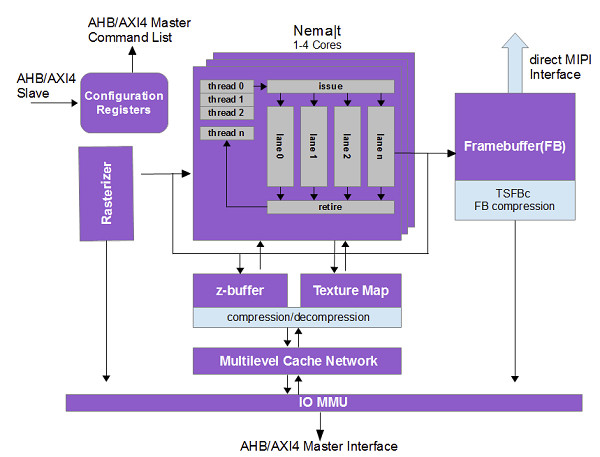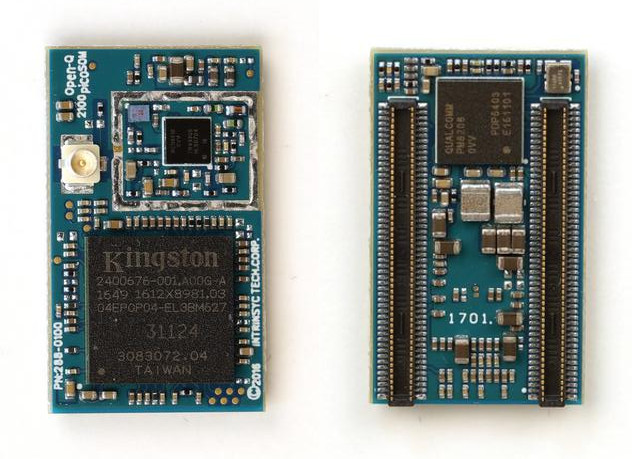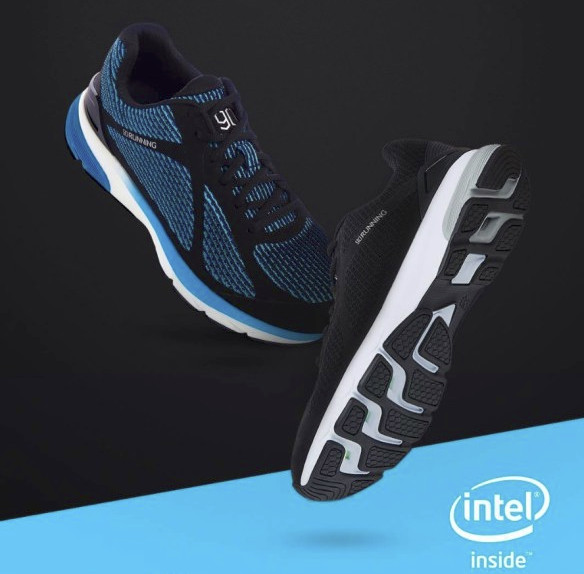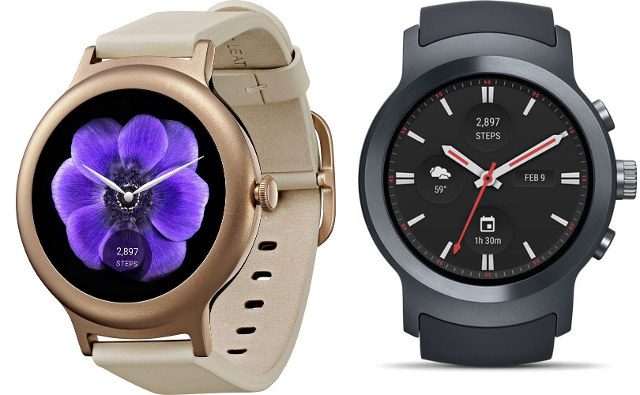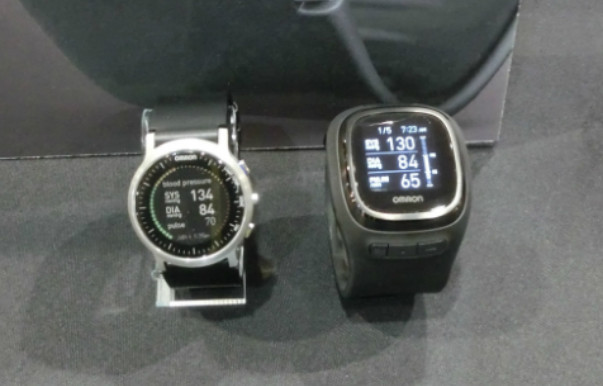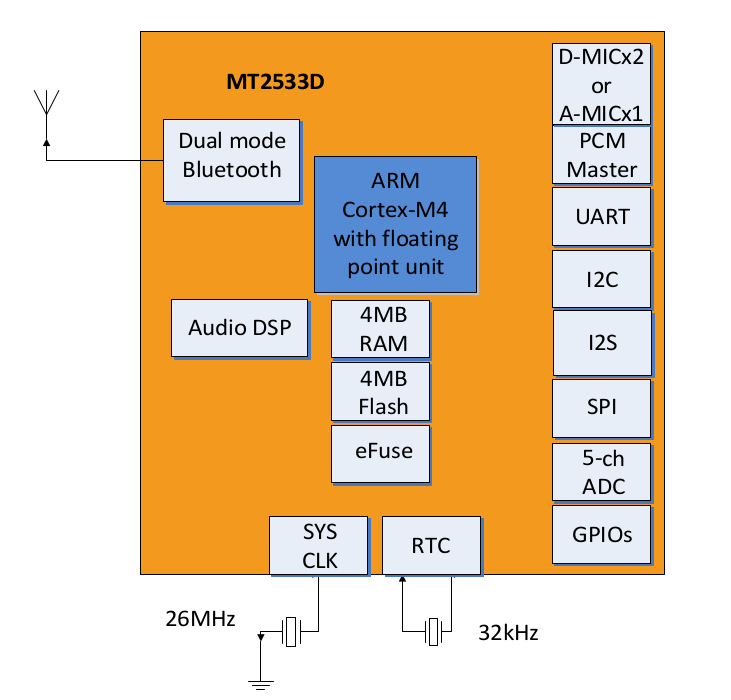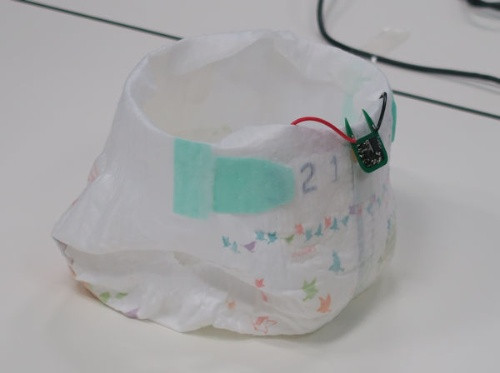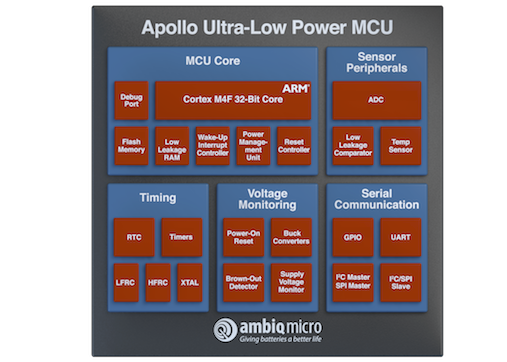When you have to purchase a wearable device, let’s say a smartwatch or fitness tracker, you have to make trade offs between user interface and battery life. For example, a fitness tracker such as Xiaomi Mi Band 2 will last about 2 weeks per charge with a limited display, while Android smartwatches with a much better interface need to be recharged every 1 or 2 days. Think Silicon aims to improve battery life of the devices with nicer user interfaces thanks to their ultra-low power NEMA 2D, 3D, and GP GPU that can be integrated into SoCs with ARM Cortex-M and Cortex-A cores. The company has three family of GPUs: NEMA|p pico 2D GPU with one core 4bpp framebuffer, 6bpp texture with/out alpha Fill Rate – 1pixel/cycle Silicon Area – 0.07 mm2 with 28nm process Power Consumption – leakage power GPU consumption of 0.06mW; with compression (TSFSc): 0.03 mW NEMA|t […]
Intrinsyc Introduces Open-Q 2100 SoM and Devkit Powered by Qualcomm Snapdragon Wear 2100 SoC for Wearables
Qualcomm unveiled Snapdragon Wear 2100 SoC for wearables early last year, and since then a few smartwatches powered by the processor – such as LG Watch Style and Watch Sport – have been launched, and Intrinsyc has now unveiled one of the first module based on the processor with Open-Q 2100 system-on-module, and a corresponding Nano-ITX baseboard. Open-Q 2100 SoM specifications: SoC – Qualcomm Snapdragon Wear 2100 (APQ8009W) quad core ARM Cortex A7 processor @ up to 1.094 GHz with Adreno 304 GPU System Memory – 512 MB LPDDR3 Storage – 4GB eMMC flash Connectivity – 802.11 b/g/n WiFi (WCN2320), Bluetooth 4.1 LE, Gen 8C GNSS (GPS/GLONASS) with on-board u.FL connector (WGR7640) Audio – Integrated Codec/PMIC (PM8916-1) with optional support for Fluence HD, Snapdragon Voice Activation, and Snapdragon Voice+ 2x 100-pin board-to-board connectors with USB 2.0, I2S, GPIO, MIPI DSI up to 720p @ 60 Hz, 2-lane MIPI CSI, SDC2/microSD […]
$100 Xiaomi “90 Minutes Ultra Smart Running Shoes” are Equipped with Intel Curie Module
If you’ve ever used a fitness tracker on a wristband, you must know that although it gives an indication of your level of activity, it’s usually not really accurate to count steps. Xiaomi’s “90 Minutes ultra smart running shoes” fixes the issue as the fitness tracker powered by Intel Curie module is placed right inside the shoes. Most of the information is in Chinese, and I could only find limited specifications for the shoes: Size – 39 to 45 Intel Curie Module based on Quark SE SoC with 6-axis accelerometer and gyroscope, Bluetooth 4.0 LE connectivity Battery – Good for 60 days on a charge Material Shoe sole – Rubber Shoe vamp – Fabric + Synthetic leather Shoe insole – Antibacterial removable air cushions The small device based on Intel Curie module resides inside the sole, stores fitness data such steps, distance covered, speed, (estimated) calories burnt, etc… It’s unclear […]
LG Watch Style and Watch Sport Smartwatches Launched with Android Wear 2.0
Google released an Android Wear 2.0 developer preview last May at Google I/O 2016, with the new operating system now supporting standalone apps and keyboard and handwriting input method, featuring a new user interface with material design support, integrating Google Fit & Google Assistant support, and supporting many of the features available in Android 7.0 Nougat like data saver, and emojis. The first two devices running the latest Android Wear 2.0 will be LG Watch Style and Watch Sport smartwatches. LG Android Wear 2.0 watches specifications can be found in the table below (Source: XDA) LG Watch Style LG Watch Sport (W280A) Display 1.2″ 360×360 P-OLED (Gorilla Glass 3) 1.38″ 480×480 P-OLED (Gorilla Glass 3) Processor Snapdragon Wear 2100 @ 1.1GHz RAM 512MB 768MB Storage 4GB Connectivity Wi-Fi, Bluetooth 4.2 Wi-Fi, Bluetooth 4.2, LTE, NFC, GPS Sensors Accelerometer, Ambient light sensor, Gyro sensor Heart Rate Sensor (PPG), Gyroscope, Accelerometer, Barometer […]
Omron Project Zero 2.0 is a Thinner Wrist Blood Pressure Monitor & Smartwatch
Omron Project Zero BP6000 blood pressure monitor & smartwatch / fitness tracker was unveiled at CES 2016. The device was due to be released at the end of 2016 pending FDA approval, but the launch has now been delayed to spring 2017, and it will be sold under the name “HEARTVUE”. The company has however showcased a new version at CES 2017, for now just called Omron Project Zero 2.0 that has the same functions but is more compact and lightweight. The watch will also work with Omron Connect US mobile app, and can record accurate blood pressure, as well as the usual data you’d get from fitness trackers including activity (e.g. steps) and sleep, as well as smartphone notifications. Blood pressure measurement can be activated by the user by pressing a button and raising his/her wrist to the height of the chest. The goal is the same as the […]
Mediatek MT2533D is a Bluetooth 4.2 SiP for Smart Headphones & Hands-Free Systems
There used to be a time when most products were based on a general purpose MCU or processor that you would interface to over chips like audio codecs, memory chips, flash storage, etc…, but in order to cut costs, application specific SoCs have become quite common over the year, so we’ve had mobile application processors for several years already, but more recently we got “wearables” SoCs and “Smart Home” SoCs, and Mediatek has launched MT2533D “headphone” SiP (System-in-Package) combining a Cortex-M4 MCU, 4MB PSRAM, an audio codec, and a dual mode Bluetooth subsystem. Mediatek MT2533D specifications: MCU – ARM Cortex-M4 @ up to 208MHz with 32KB L1 cache, FPU, MPU, AES 128/192/256 crypto engine and TRNG Memory – 160kB SRAMs, 4MB pseudo SRAM Storage – 4MB flash Wireless Connectivity – Bluetooth 4.2 dual mode (classic and low energy) Audio AAC/SBC for Bluetooth audio CVSD/mSBC for Bluetooth speech PCM playback: 8-48kHz […]
Batteryless, Urine Powered Smart Diapers Notify You When It’s Time to Change Them
One of the downside with current smart wearables is that most need to be recharged quite often, every day, week or month, and we’re still a long way of 10 year battery life offered by typical watches. I’m hopefully that eventually many devices won’t need to be recharged at all as we’ll have made improvements both in terms of power efficiency and energy harvesting using solar, body heat, vibrations and other techniques. Takakuni Douseki, professor at the Department of Electronic and Computer Engineering of Ritsumeikan University, has been working on micro energy harvesting, and his latest “wireless involuntary urination sensor system” notifies the user when it’s time change the diapers without the need of any battery, instead using energy generated by urine and stored in a capacitor in order to transmit the data wirelessly. The prototype is using a modified baby diaper with a 320x5mm activated carbon piece, and a […]
Ambiq Micro Introduces Ultra-Low Power Apollo 2 Cortex-M4F MCU Consuming Less than 10 μA/MHz
Last year Ambiq Micro unveiled their Apollo Cortex-M4F MCU with Cortex M0+ energy efficiency thanks to operation in sub-threshold voltage (< 0.5 V), and the MCU is said found in Matrix Powerwatch, a fitness tracker powered by body heat that you never need to charge. The company has recently announced a new version of the micro-controller with Apollo 2 MCU with better maximum performance thanks to a higher maximum clock speed (48 MHz vs 24 MHz), and higher efficiency (10 μA/MHz vs 30 μA/MHz @ 3.3V). Apollo 2 MCU key features and specifications: Ultra-low supply current <10 μA/MHz executing from flash at 3.3 V <10 μA/MHz executing from RAM at 3.3 V ARM Cortex-M4 Processor up to 48 MHz with FPU, MMU, wake-up interrupt controller with 32 interrupts Ultra-low power memory Up to 1 MB of flash memory for code/data Up to 256 KB of low leakage RAM for code/data […]


